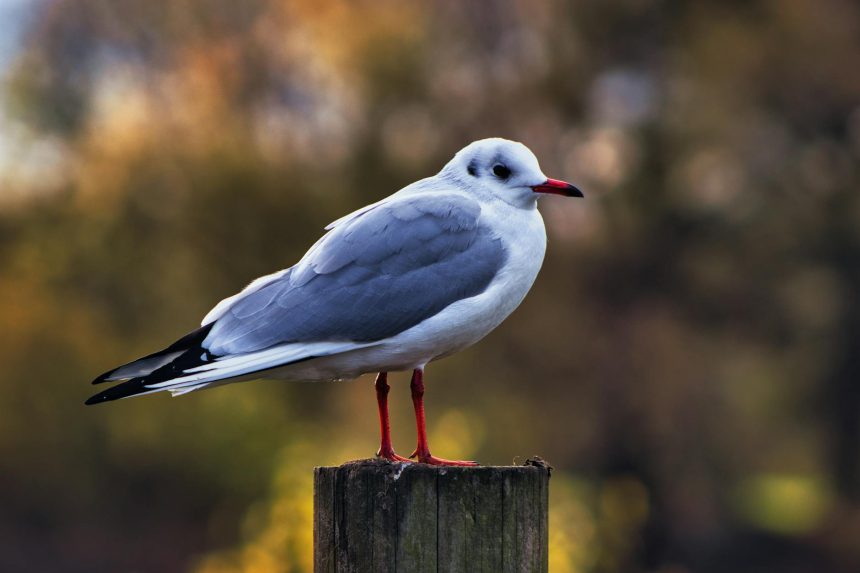Migrating Birds: 7 Ways Autumn Gales Create Rare UK Sightings
Each autumn, millions of birds embark on epic journeys, navigating continents and oceans in pursuit of warmer climes and abundant food. These incredible feats of endurance are a spectacle in themselves. However, when nature throws a curveball in the form of powerful autumn gales, the usual flight paths of these migrating birds can be dramatically altered, leading to unexpected and thrilling encounters for birdwatchers across the UK.
Imagine the excitement of spotting a species rarely seen on these shores, blown off course by a distant storm. This isn’t just a fantasy; it’s a regular occurrence that transforms routine birding into an exhilarating treasure hunt. Let’s delve into how these powerful weather systems create unique opportunities for rare bird sightings.
The Wonders of Avian Migration: An Annual Spectacle
Bird migration is one of the natural world’s most impressive phenomena. Driven by instinct, daylight changes, and food availability, countless species travel thousands of miles.
- From tiny warblers to majestic raptors, each journey is fraught with peril and wonder.
- Their internal compasses and celestial navigation skills are truly astounding, guiding them across vast, featureless expanses.
- Yet, even the most skilled navigators can be overwhelmed by extreme weather conditions.
These long-distance travelers are often flying on the edge, conserving every ounce of energy. A sudden shift in weather can force them to seek refuge or entirely new routes.
How Autumn Gales Impact Migrating Birds
Powerful low-pressure systems, often accompanied by strong winds and heavy rain, are more than just a nuisance for us. For migrating birds, these autumn gales can be a matter of life and death, forcing them to deviate from established routes. This diversion, while perilous for the birds, is precisely what brings rare and exciting species to our shores.
Here are seven ways autumn gales influence these incredible journeys, often to the delight of keen birders:
- Disorientation: Strong crosswinds can throw birds far off course, disrupting their internal navigation systems.
- Forced Landings: Exhausted birds may be forced to land in unusual coastal or inland locations to rest and refuel.
- “Weather-Driven Vagrancy”: Birds from distant continents can be physically carried by strong winds across oceans to unexpected destinations.
- Concentration Events: Birds seeking shelter from storms may congregate in sheltered bays or estuaries, making them easier to spot.
- Altered Flight Paths: To avoid the worst of a storm, birds might take a longer, more circuitous route, passing over areas they wouldn’t normally frequent.
- Coastal “Fallouts”: After battling headwinds over the sea, exhausted migrants can “fall out” en masse onto the first available land, often the UK’s coastlines.
- Enhanced Visibility: Birds pushed inland or to unexpected spots are often more visible and less wary than usual, especially when recovering from their ordeal.
Rare Bird Sightings: A Birder’s Dream
For birdwatchers, especially those in the UK, autumn gales are often synonymous with the chance of spotting a “vagrant” – a bird that has strayed far from its normal range. These unexpected visitors create a buzz within the birding community, leading to what’s often called a “twitch” – a rapid journey to see a rare bird.
The thrill isn’t just in seeing a rare bird, but in understanding the epic journey it undertook. Each sighting tells a story of survival against the odds, a testament to the resilience of nature.
Identifying Unusual Visitors: Sabine’s Gulls and Phalaropes
Among the most anticipated vagrants brought by autumn gales are specific pelagic (open ocean) species, often pushed inland or close to shore. Two prime examples frequently mentioned in reports are Sabine’s gulls and phalaropes.
Spotting these birds requires a keen eye and knowledge of their distinct features:
- Sabine’s Gulls: Look for their striking black, white, and grey plumage, especially the distinctive ‘W’ pattern on their underwings in flight. They are elegant, agile fliers, often seen feeding on the open ocean. Their triangular wing shape and forked tail are also key identifiers.
- Phalaropes: These small, delicate waders are unique for their swimming behavior, often spinning on the water’s surface to stir up food. Red-necked Phalaropes have a distinctive red neck patch in breeding plumage, while Grey Phalaropes (or Red Phalaropes in breeding plumage) are chunkier with a short bill. They are incredibly buoyant and often appear tame.
These birds are typically found far out at sea, making their appearance near coastlines or even inland bodies of water an extraordinary event. Their presence is a clear indicator of significant weather disruption.
Beyond the Usual: Other Potential Vagrants
While Sabine’s gulls and phalaropes are classic examples, autumn gales can bring a host of other rarities. American waders, various petrels, shearwaters, and even exotic passerines from continental Europe or further afield can be swept across the Atlantic or North Sea. Keeping an eye on birding alerts and local reports is crucial during these periods.
Maximizing Your Chances: Tips for Spotting Migrating Birds
To make the most of these weather-induced birding opportunities, preparation and a bit of luck are key. Here’s how you can increase your chances of witnessing these incredible events:
- Monitor Weather Forecasts: Keep a close eye on predictions for strong westerly or north-westerly gales, especially after periods of high pressure.
- Head to the Coast: Coastal headlands, estuaries, and sheltered bays are prime locations for exhausted birds seeking refuge.
- Check Birding Websites & Apps: Local birding groups and national organizations often provide real-time updates on rare sightings.
- Be Patient and Persistent: Rare birds don’t always appear on demand. Sometimes it takes hours of scanning to find something unusual.
- Bring the Right Gear: A good pair of binoculars and a spotting scope are essential for identifying distant or wary birds.
Engaging with the wider birding community can also significantly enhance your experience. Websites like RSPB and BTO are excellent resources for information on bird migration, identification, and conservation efforts.
Conclusion: The Thrill of the Unexpected
Autumn gales, while formidable, are a natural force that profoundly impacts the remarkable journeys of migrating birds. They turn the UK into a temporary haven for rare species, offering birders unparalleled opportunities for unique sightings. From the distinctive patterns of Sabine’s gulls to the unusual feeding habits of phalaropes, each unexpected visitor tells a story of resilience and the unpredictable beauty of the natural world.
So, the next time the wind howls and the rain lashes down, remember that somewhere out there, a feathered traveler might be getting an unexpected push towards your local patch. Grab your binoculars and embrace the thrill of the chase! Share your own rare bird sightings in the comments below, or join a local birdwatching group to experience the magic firsthand!
**
Featured image provided by Pexels — photo by Jakub Pabis







